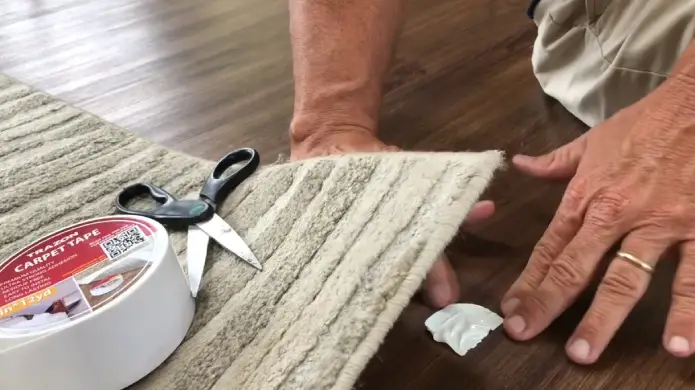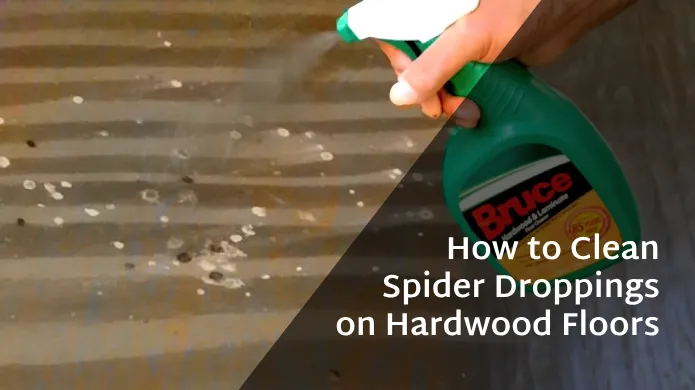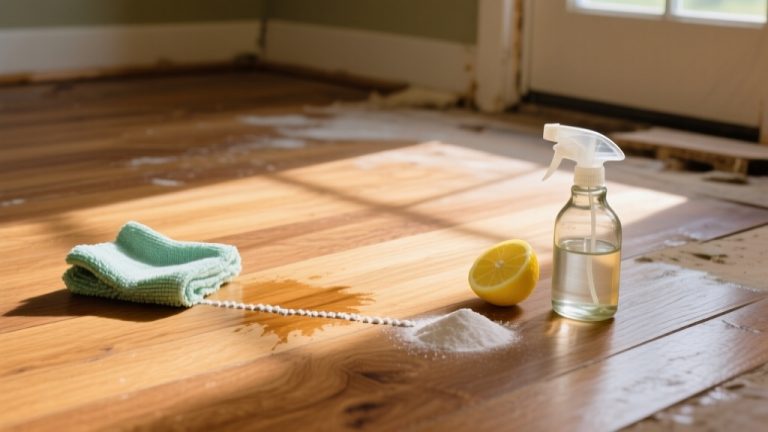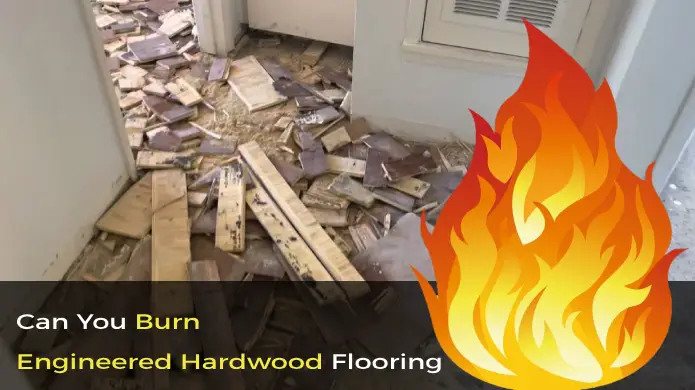Does Double Sided Carpet Tape Ruin Hardwood Floors: 5 Considerations
Double-sided carpet tape can be a convenient solution for keeping rugs and carpets in place on hardwood floors. But when removing the tape from the wood floor, you might encounter challenges getting rid of the adhesive residue without damaging the wood finish.
Most rug tapes can ruin hardwood floors because of their strong adhesive. The adhesive in the tape easily reacts with wooden flooring and floor finishes exposed to heat.
This reaction loosens the adhesive grip and leaves discolored stains that damage the hardwood floors. As a result, your once pristine hardwood floors may become compromised, with the tape peeling off and leaving unsightly marks behind.
The purpose of this article is to explain how double-sided carpet tape can negatively impact the appearance of your wood floors. We will also provide safe steps for removing adhesive residue and alternative solutions to keep your floor rugs in place. So keep reading for in-depth information.
How Double-Sided Carpet Tape Ruin Hardwood Floors Appearance?
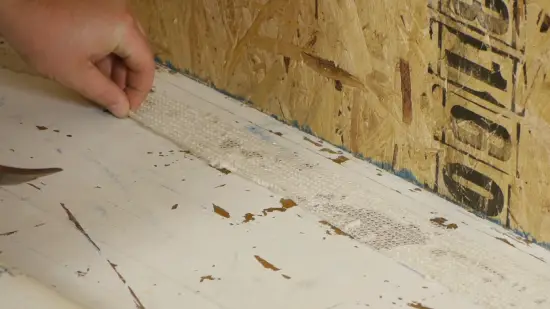
When using double-sided carpet tape on hardwood floors, several potential issues can affect the floor’s appearance.
- Adhesive residue
- Discoloration
- Surface damage
- Staining on floor
- Finish degradation
Let’s discuss these in detail:
1. Adhesive Residue
Double-sided carpet tape can contain strong adhesive compounds that can react with the finish or surface of the hardwood, causing sticky residue to be left behind.
This residue looks unsightly and can attract dust, dirt, and debris, further compromising the appearance of your hardwood floors. Removing this sticky residue can be challenging, requiring specialized cleaning products and techniques.
2. Discoloration
Certain adhesives in double-sided carpet tape can contain chemicals that react with wood when exposed to these elements. Over time, these reactions can lead to discoloration of the hardwood, causing areas of the wood to appear lighter or darker than the rest.
This can result in an unsightly and uneven appearance that detracts from the natural beauty of your hardwood floors.
3. Surface Damage
These aggressive adhesives are often found in cheap or low-quality carpet tapes not specifically designed for hardwood floors. When you attempt to remove the tape, the adhesive can stick to the surface of the wood and become difficult to remove without causing damage.
Scrubbing or scraping off the adhesive residue can result in scratches or abrasions on the wood, which can be unsightly and potentially expensive to repair.
4. Staining on Floor
If the dyes or pigments in your carpet tape react with the hardwood finish, it can cause staining or color transfer on your floor’s surface. When you remove the carpet tape, you might notice splotches or streaks on your hardwood floor.
The dyes or pigments can seep into the wood and leave behind a permanent mark. This is especially true if the tape is left in place for a long time or if the adhesive is particularly strong.
5. Finish Degradation
Using inappropriate carpet tape can damage your hardwood floor’s finish, resulting in a dull and damaged appearance. The hardwood floor’s finish serves as a protective layer, shielding the wood from everyday wear and tear.
However, using the wrong double-sided carpet tape can strip away this protective layer, leaving your floor vulnerable to scratches, scuffs, and stains. Also, certain carpet tapes may contain chemicals that can react with the finish, causing discoloration or chemical damage.
How to Remove Double-Sided Carpet Tape Adhesive from Hardwood Floors Safely?

If you’re dealing with the sticky residue left behind by double-sided carpet tape on your hardwood floors, there are a few steps to remove it safely.
Materials You’ll Need:
- Hairdryer
- Plastic scraper
- Adhesive remover
- Mild soap
- Soft cloth
- Warm water
- Bucket or mop
Step 1: Heat the Tape
Begin by setting the hair dryer to low heat and aim it at a corner of the double-sided carpet tape. Moving the hairdryer back and forth along the tape will help loosen the adhesive.
Here are three key reasons why heating the tape is effective:
- Softens the adhesive: The heat from the hairdryer softens the adhesive, making it easier to remove without damaging the hardwood floor.
- Increases flexibility: The warmth makes the tape more flexible, reducing the risk of tearing or leaving behind residue.
- Speeds up the removal process: By applying heat, the adhesive loosens more quickly, saving time and effort during the removal process.
Step 2: Peel the Tape
Now peel back the tape slowly and evenly while continuing to apply heat. You’ll need to do this to remove double-sided carpet tape without damaging your hardwood floors.
By peeling the tape slowly and evenly, you ensure it comes off in one piece, minimizing the risk of leaving behind any residue or adhesive. Applying heat throughout the process helps to loosen the adhesive, making it easier to peel off.
If you encounter any resistance while peeling, direct the heat from the hairdryer toward the resistant area. This will further soften the adhesive and allow for easier removal. Remember to use a plastic scraper to lift the edge of the tape, being careful not to scratch or damage the hardwood floors beneath.
Step 3: Remove Residue with Adhesive Remover
After peeling off the tape, adhesive residue may still be on the hardwood floor. You can remove this residue from an adhesive remover (like Goo Gone). Here’s how you can do it:
- Apply a small amount of adhesive remover to a soft cloth.
- Gently rub the adhesive residue with the cloth, careful not to damage the wood finish.
- Continue rubbing until the residue starts to lift off.
- If needed, apply more adhesive remover to the cloth.
Step 4: Clean the Area
After removing the adhesive residue with the adhesive remover, there may still be some remnants left behind. By rinsing the cloth and wiping the area again, you effectively remove any remaining residue and ensure a clean surface. Ensure you are thorough in this process to prevent any potential damage to the floor.
The warm soapy water solution acts as a gentle cleanser, lifting away any remaining residue without causing harm to the hardwood. Take your time and cover the entire area to achieve the best results.
Step 5: Mop the Floor
Once the residue is gone, mop the floor with a mild soap and warm water solution. This final step is crucial to ensure a thorough clean and remove any remaining dirt or grime from the floor.
Mopping with a mild soap will not only help to eliminate any residue left behind from the cleaning process, but it will also leave your hardwood floors looking fresh and shiny.
Alternative Ways to Stop Floor Rugs from Moving on Hardwood Floors
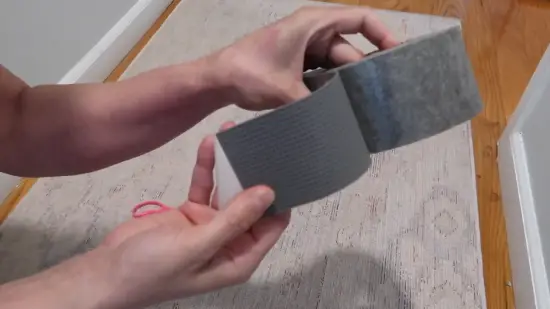
If you’re tired of constantly readjusting your floor rugs on your hardwood floors, there are several effective solutions to keep them in place.
1. Rubber Mesh
Rubber mesh is a great alternative to non-slip rug pads. It can be easily placed under your rug to prevent it from moving on hardwood floors. This versatile material offers several advantages over traditional rug pads.
- Enhanced grip: Rubber mesh provides a superior grip on hardwood floors, effectively preventing your rug from sliding or bunching up.
- Protection: Using a protective barrier between the rug and the floor, rubber mesh helps prevent scratches, scuffs, and other damage to your hardwood surface.
- Easy trimming: The rubber mesh’s flexibility allows easy trimming to fit any rug size, ensuring a perfect fit every time.
- Reusability: Unlike rug pads that may need to be replaced over time, rubber mesh can be reused on different rugs, making it a cost-effective choice.
2. Adhesive Velcro Strips
You can also use adhesive-backed Velcro strips to secure your rug on hardwood floors. These strips offer a good balance between grip and ease of removal. They are a convenient solution as they provide a strong hold while allowing you to easily remove or reposition your rug without causing any damage.
The soft adhesive backing ensures the Velcro stays securely, preventing your rug from slipping or bunching up. However, when using adhesive-backed Velcro strips, be cautious when removing them from the floor. They may leave some residue behind while they are designed to be removable.
3. Command Strips
You can easily secure your rug in place on hardwood floors using Command strips. Just attach them to the corners or edges of your rug and press them firmly onto the floor.
Command strips are a convenient alternative to traditional rug pads or double-sided carpet tape. They provide a strong adhesive bond that keeps your rug in place without damaging your hardwood floors.
4. Furniture Grippers
These grippers are small adhesive pads that prevent furniture from sliding on hardwood floors. They can also be repurposed to anchor rugs and prevent them from slipping and sliding.
Simply attach these grippers to the corners or edges of your rug, and they will add friction to keep it in place. The grippers are designed to provide a strong grip without damaging your hardwood floors. They are easy to apply and remove, making them a convenient solution for keeping your rugs securely in place.
5. Cork Mats
If you’re looking for an effective way to keep your rug in place and protect your hardwood floors, consider using cork mats. Cork is a natural material that provides excellent grip and cushioning, making it ideal for preventing your rug from slipping.
Here are three reasons why cork mats are a great choice:
- Non-slip surface: Cork’s texture interacts well with hardwood floors, creating a surface that keeps your rug in place. You can enjoy peace of mind knowing your rug won’t slide around, causing potential accidents or damage.
- Eco-friendly: Cork is a sustainable and renewable material, making it an environmentally friendly option. You are contributing to a greener and healthier planet by choosing cork mats.
- Floor protection: Unlike carpet tape, cork mats won’t damage your hardwood floors. They provide a protective barrier that prevents scratches or marks, ensuring the longevity and beauty of your flooring.
What removes sticky tape residue from wood?
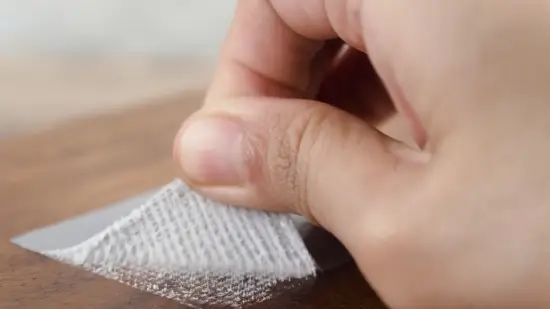
To remove sticky tape residue from wood, simply apply a small amount of vegetable oil and let it sit for a few hours. Then, use a warm hair dryer to loosen the residue with heat. Vegetable oil works as a natural adhesive remover and helps break down the stickiness of the tape residue.
After letting the oil soak in, the warm air from the hair dryer will soften the residue, making it easier to wipe away. Use a soft cloth or sponge when wiping to avoid scratching the wood surface. You can reapply the oil and repeat the process if there are any stubborn spots.
Protect Your Hardwood Floors: Safely Remove Tape Residue and Prevent Sliding Rugs
Now you know that double-sided carpet tape can indeed ruin hardwood floors. Its adhesive can leave behind unsightly marks and damage the appearance of your beautiful flooring.
However, we have provided a safe and effective method to remove the tape residue from your hardwood floors. Also, we have given you alternative ways to prevent floor rugs from sliding on hardwood floors.
With this information, you can now protect your hardwood floors and keep them looking flawless for years to come.

